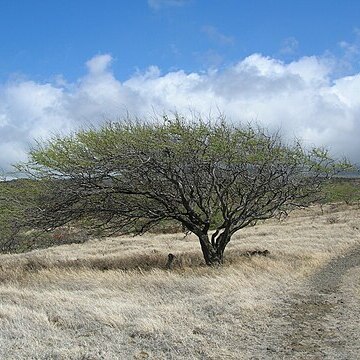Tree or shrub to 10 m high, with many branches from ground level, unarmed or spiny, with short, axillary, uninodal, geminate, divergent spines less than 4 cm long; bark deeply longitudinally fissured, brown; flowers c. 6 mm long in inflorescences 7-11 cm long. Corolla yellowish green. Pod cylindrical, 6-25 by 1-1.5 cm, compressed with close anastomosing ribs. Seeds brown, oblong, 6.5 mm long.
A spiny tree or shrub. It grows 4-10 m high. The trunk is twisted. The twigs usually have 1 or 2 straight spines in the axils of leaves. The leaflets are 2-4 times as long as wide. They are rough. The flowers are green or yellow. The pods are smooth. They are 5-25 cm long and about 1 cm wide. They are yellowish-brown. The seeds are brown.

